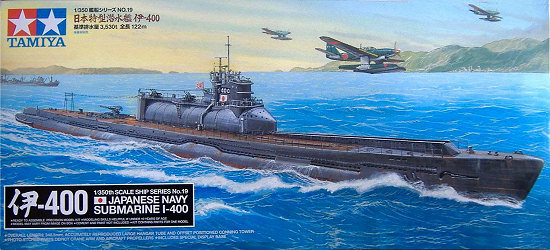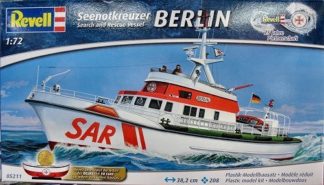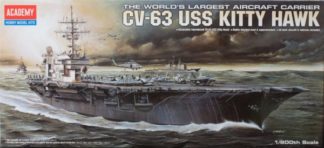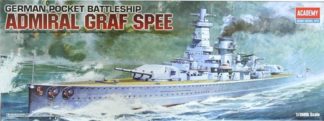Description
- The Japanese interest in submarines dates back to at least 1904 when they purchased 5 Holland class submarines from the United States. They also purchased submarines from England and France and they license-built units of Italian design.1 After WWI Japan received seven German submarines as reparation. Japan’s involvement in submarine development blossomed with the possession of the then state-of-the-art German vessels.Japan was also interested in submarine carried aircraft from at least 1921 when they purchased a Kaspar U-1 biplane from Germany to use as a pattern aircraft. In 1927 the first Japanese design, the Yokosho I-GO, flew for the first time.2 The stage was set for the I-400.
Japan envisioned the next war being fought with fleets of various classes of submarines used for coastal protection, long-range reconnaissance, including several that carried disassembled planes in a waterproof hanger, attack, and command vessels.3 Following those precepts they designed and built a variety of submarines capable of only certain tasks.
In WWII that strategy, among others, would prove to be their undoing as the Japanese submarine force proved to be almost entirely ineffective in WWII. When the war started Japan had more submarines in the Pacific Ocean then all the Allied submarines combined! It made very little difference to their war effort.
The Allied submarines went on independent ‘hunter-killer’ missions for capital ships and anything else afloat. Japanese submarines continued to try to co-ordinate a mass execution of Allied ships that never quite came together. The failure of the Japanese reconnaissance submarines at Midway was but one example.
Except for the sinking of the USS Indianapolis and the sinking of the already badly damaged USS Yorktown, the Japanese submarines of WWII contributed little to the war effort. The strategy of a ‘single, massive knock out punch’ by a large group of submarines on an American fleet of capital ships could never be implemented, in part because we had broken their secret codes and in part because we never planned to enter into a ‘slug fest’ with the Japanese navy. In effect the Japanese submarines milled aimlessly around the Pacific Ocean looking for the ‘big battle’ and were picked off one by one by US forces. Most of them had never even fired a shot!
In early 1942, flush with the successful attack on Pearl Harbor, Adm. Isoroku Yamamoto ordered the development of a special submarine class. The I-400 class of submarines was to be able to carry two or more attack aircraft capable of carrying a single torpedo or an 800-kilogram bomb. A range of 40,000 nautical miles without refueling or resupply to reach the East Coast of America was requested.1 Such a submarine had never existed and, as far as the world would know until late 1945, it never did exist.
The first of three I-400 class submarines was begun in Kure Dock Yards in early 1943 and was launched in late 1944; an astonishing feat considering the lack of steel and raw materials available to Japan at that time in the war. The I-400 displaced 3,530 tons surfaced, 5,223 tons submerged. It was 400.3 feet long, 39.3 feet in beam, and a draft of 22.9 feet. Its range was an astounding 37,500 nautical miles, one and a half times around the world! Submerged speed was 6.5 knots with 18.7 knots on the surface. 3 It carried three Seiran attack aircraft developed just for this class. It also had 8 forward torpedo tubes that launched the formidable Type 95 Long Lance, perhaps the best torpedo carried by any submarine in the world at the time. The topside armament included a 5.5-inch deck gun, and one single and three triple 25mm antiaircraft guns.
The I-400 class was, without a doubt, the longest ranged and largest submarine in the world until the United States launched the USS Benjamin Franklin (SSBN-640) in 1965!1 Tamiya’s instructions say the USS Triton (SSN-586), launched in 1959, was the first submarine as large or larger than the I-400 class, and I believe they called it correctly.
Tamiya released a 1/350th scale model of I-400 class this summer and it’s a real winner!
- Length: 348.5mm.




